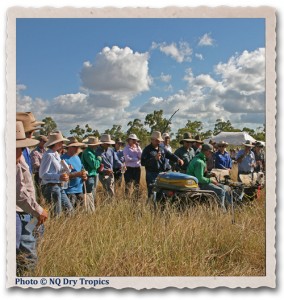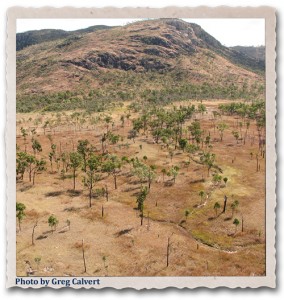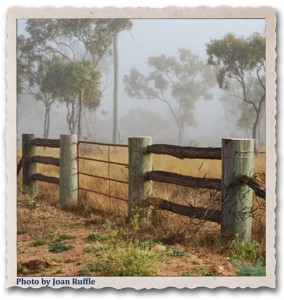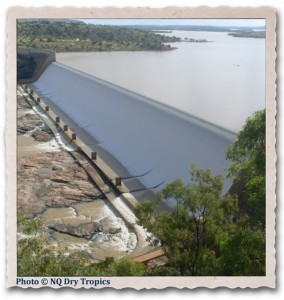 People Connections: Strongly connected, well-informed and highly-skilled communities are the region’s greatest NRM assets. Sustainably managing our natural resources depends on these communities – including rural land managers, Traditional Owners, NRM community groups, industry, researchers and all levels of government – working together and being empowered to make informed NRM decisions. The strong spirit of regional collaboration is illustrated by a wide range of decision-making forums, and formal and informal partnerships between groups. Traditional Owners have a crucial role to play, given their connection with the land and their traditional ecological knowledge.
People Connections: Strongly connected, well-informed and highly-skilled communities are the region’s greatest NRM assets. Sustainably managing our natural resources depends on these communities – including rural land managers, Traditional Owners, NRM community groups, industry, researchers and all levels of government – working together and being empowered to make informed NRM decisions. The strong spirit of regional collaboration is illustrated by a wide range of decision-making forums, and formal and informal partnerships between groups. Traditional Owners have a crucial role to play, given their connection with the land and their traditional ecological knowledge.
The strategies in our plan aim to:
- connect and inform the regional community so it is empowered to participate in NRM;
- build on existing networks and create opportunities for new connections to share knowledge;
- coordinate NRM research, education, investment and extension to reduce duplication, increase effectiveness, and improve accessibility to NRM knowledge;
- reflect our regional community’s priorities and desired actions by providing opportunities to be involved in NRM planning and decisions;
- ensure the region’s natural resource data and mapping is updated and accessible, so it can provide the basis for informed NRM decisions;
- support improved collaboration between NRM community groups;
- build capacity of Traditional Owners to appropriately capture, store and use traditional ecological knowledge;
- increase the opportunities for Traditional Owners to connect to country by supporting training, employment and enterprise opportunities, access to country arrangements, and partnerships with other organisations;
- provide rural land managers with the information and skills to make sustainable land management decisions; and
- promote collaboration between the agricultural, financial, environmental, government, research, education and training sectors to develop long-term, region-specific support processes for rural communities.
 Climate change: Climate change is threatening the Great Barrier Reef (GBR) and its catchments, our natural resource-reliant enterprises and communities. The GBR is currently experiencing its worst coral bleaching event on record primarily caused by elevated sea temperatures. Our grazing industry is experiencing drought conditions, with nearly 80 per cent of our region currently drought declared. Predicted regional effects from a changing climate include longer drier periods, more hot days and less frequent but more intense storm systems. This could mean less water resources and more pressure on biodiversity and land productivity. Land managers and communities are understandably concerned by predictions of more prolonged periods without rain.
Climate change: Climate change is threatening the Great Barrier Reef (GBR) and its catchments, our natural resource-reliant enterprises and communities. The GBR is currently experiencing its worst coral bleaching event on record primarily caused by elevated sea temperatures. Our grazing industry is experiencing drought conditions, with nearly 80 per cent of our region currently drought declared. Predicted regional effects from a changing climate include longer drier periods, more hot days and less frequent but more intense storm systems. This could mean less water resources and more pressure on biodiversity and land productivity. Land managers and communities are understandably concerned by predictions of more prolonged periods without rain.
The strategies in our plan aim to:
- support programmes that assist individuals, local councils and industries to reduce carbon emissions and capture carbon;
- investigate and promote commercially competitive, alternative and renewable electrical energy, fuel resources and consumable products;
- incorporate climate change projections into planning and NRM;
build capacity of our communities and individuals to adapt to climate change impacts; and - improve the resilience of our natural resources by protecting areas of ‘native refugia’ and investigating:
- innovative land and water management practices;
- crop diversification and switching;
- new enterprises; and
- the pest and biosecurity implications of higher temperatures.
 Land: Land resources are finite, and need to be appropriately planned for and managed to ensure their ongoing economic and environmental productivity. Land managers and community groups need a range of support, including training, extension, and easy access to available information on the condition of our natural resources and how to best manage them. With over 97.4 per cent of our region being rural, ultimately a large part of NRM governance is carried out by graziers and farmers through their own initiative and funds, as well as through partnerships with industry and government that provide flow-on benefits throughout the community.
Land: Land resources are finite, and need to be appropriately planned for and managed to ensure their ongoing economic and environmental productivity. Land managers and community groups need a range of support, including training, extension, and easy access to available information on the condition of our natural resources and how to best manage them. With over 97.4 per cent of our region being rural, ultimately a large part of NRM governance is carried out by graziers and farmers through their own initiative and funds, as well as through partnerships with industry and government that provide flow-on benefits throughout the community.
The strategies in our plan aim to:
- provide land managers with information, training and extension that support best management practices;
- ensure significant projects and infrastructure development incorporate measures to protect and manage natural resources, including groundwater and downstream impacts;
- consider land capacity prior to expanding new irrigated and dryland cropping areas;
- ensure land use planning prevents increased development in natural hazard areas;
- support land managers to better identify the capability of their land, adopt innovative management techniques, and employ best management practices that improve land condition;
- provide regional strategic direction for land management and long-term improvement in soil health;
- reduce adverse impacts of pests and weeds on agricultural land productivity;
- prioritise soil health by supporting the development and promotion of innovative methods to maintain and increase soil carbon and soil chemistry within cropping, horticulture and grazing systems;
- avoid or, where it is occurring, remediate gully and stream bank erosion;
- reduce the extent of dryland salinity and protect the environment from the impacts of disturbing acid sulfate soils; and
- reduce risks to community safety, the environment and rural activities from abandoned mines, processing plants and exploration activities.
 Water: The region’s community identified water as the most important resource requiring management and protection. Major issues include increasing demand for water, quality of water entering GBR-connected waterways and Bowling Green Bay wetlands, and altered surface and groundwater interactions in the Lower Burdekin sub-catchment.
Water: The region’s community identified water as the most important resource requiring management and protection. Major issues include increasing demand for water, quality of water entering GBR-connected waterways and Bowling Green Bay wetlands, and altered surface and groundwater interactions in the Lower Burdekin sub-catchment.
The community and governments have a strong commitment to protect the GBR as an exceptional natural resource. The major threats to the health of the GBR are declining water quality, coastal development and climate change. Increased sediment, nutrient and pesticide runoff from agricultural land uses are the greatest cause of declining water quality on the GBR. The Burdekin River catchment generates the single largest source of suspended sediment to the whole GBR (Bainbridge et al, 2013).
Increased investment in the past 10 years has helped us to better understand water resource condition and to provide support to tackle declining water quality, but more is needed. Land managers in our region need the information and support to continue to adopt innovative and improved land and water management practices.
The strategies in our plan aim to:
- ensure that water resources are sustainably managed, and that planning decisions incorporate environmental values, and pressures from climate change, increased demand and development;
- promote the adoption of water-efficient technology and water-efficient urban and industrial use and farming practices;
- manage environmental flows for the health of natural ecosystems, for example to allow for drying and wet seasonal flushes of coastal wetland ecosystems;
- promote activities that ensure groundwater table levels and salinity concentrations in the Lower Burdekin are maintained at optimum levels;
- support efforts to reduce nutrient and sediment loads to the GBR, to achieve targets identified in the Burdekin Water Quality Improvement Plan (2016) and Reef 2050 Plan;
- remediate and control gully erosion in high priority areas as identified in the Water Quality Improvement Plan;
- support land managers to implement best management practices to conserve water resources and incorporate environmental outcomes into their management systems; and
- establish a systems repair and prevention approach for the wider NRM community to address holistic sub-catchment and ecosystem health issues – identifying what is needed to restore and maintain the function of coastal wetland ecosystems.
 Biodiversity: Our region’s rich biodiversity is being threatened by:
Biodiversity: Our region’s rich biodiversity is being threatened by:
- declining water quality and land condition associated with land management practices;
- weeds and pests; and
- climate change.
The strategies in our plan aim to:
- maintain landscapes in good biodiversity condition and rehabilitate poor condition landscapes;
- improve the distribution, composition and diversity of regional ecosystems, and native plants and animals;
- effectively manage the adverse impacts of pest plants and animals on our region’s biodiversity, environment, economy, society and culture;
- maintain terrestrial habitats of sufficient size and condition to support functioning ecosystems and healthy and viable populations of native plants and animal species;
- maintain riparian vegetation to protect catchment connectivity, bank stability, stream processes and water quality;
- protect natural wetland conservation values and ecological processes from the effects of excessive irrigation, to help reintroduce natural season wetting and drying cycles; and
- establish and implement a regional Conservation Action Plan.
